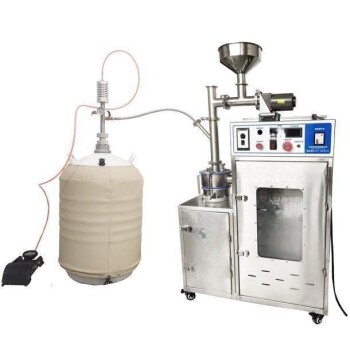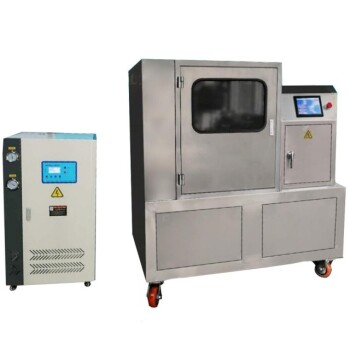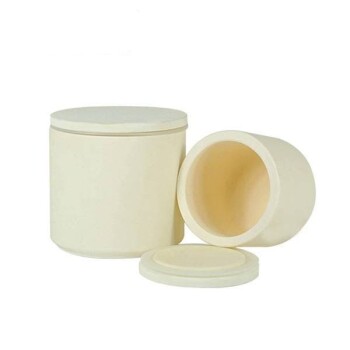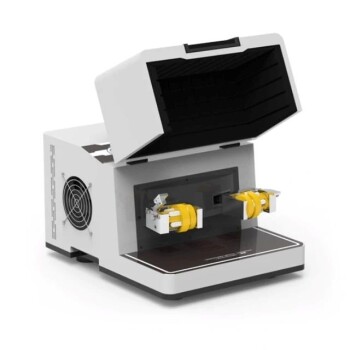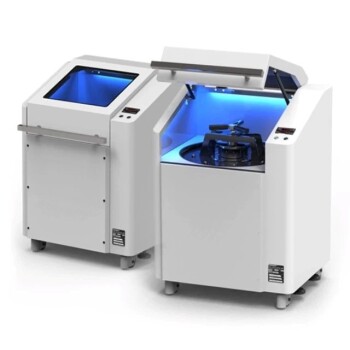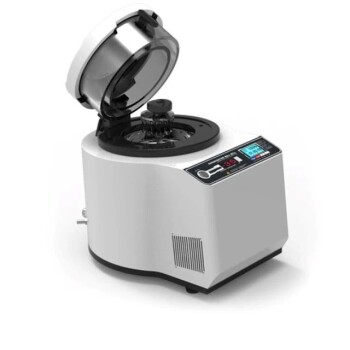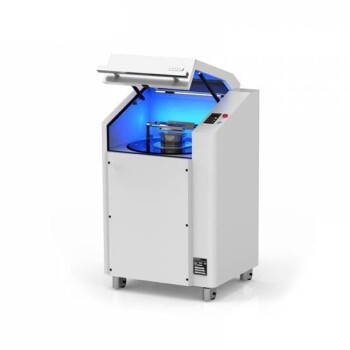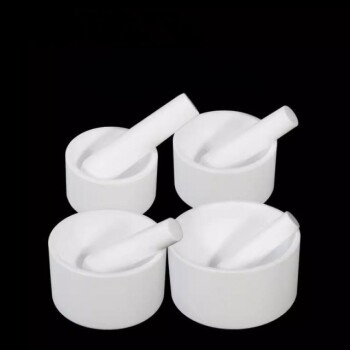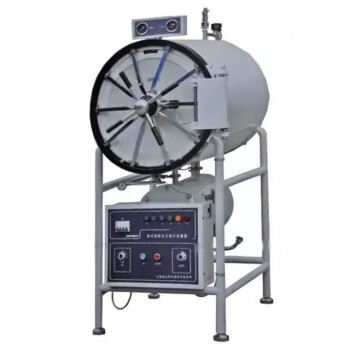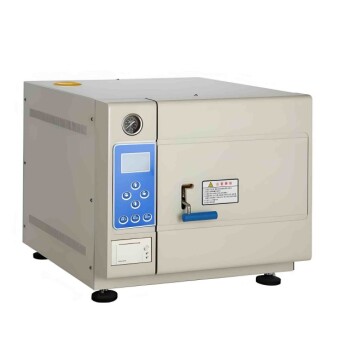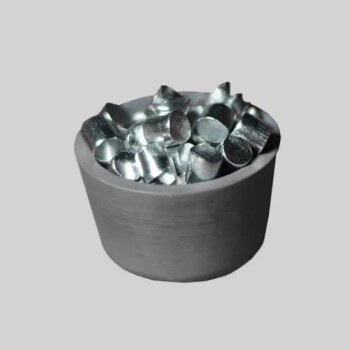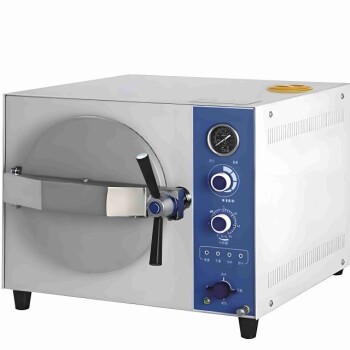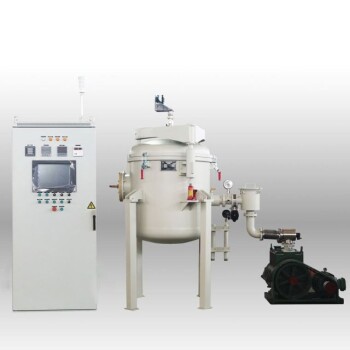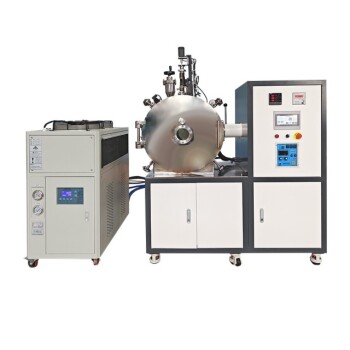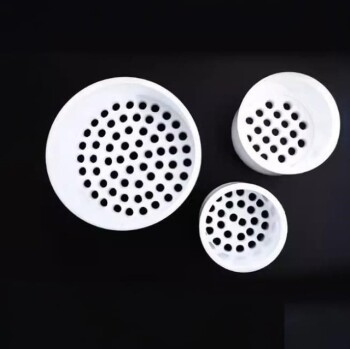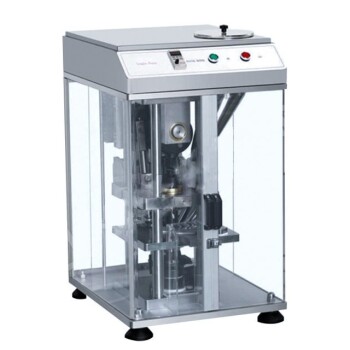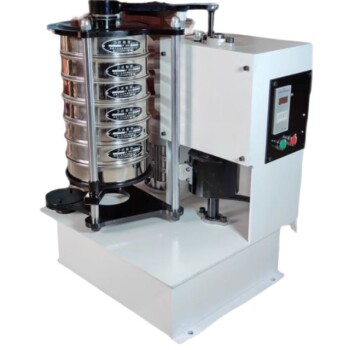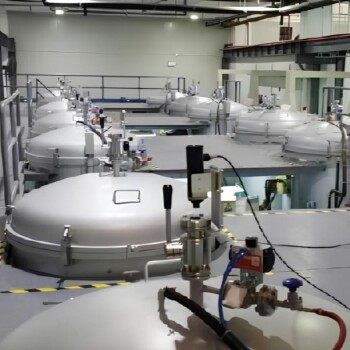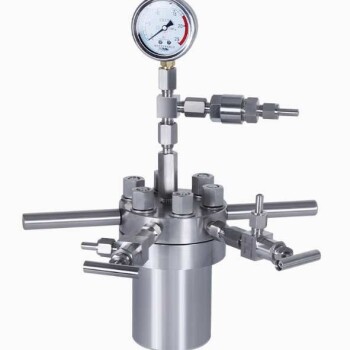본질적으로 극저온 분쇄는 상온에서 크기를 줄이기 어렵거나 불가능한 재료에 사용됩니다. 액체 질소와 같은 냉매를 사용하여 재료를 극도로 취약해질 때까지 냉각합니다. 이러한 취성(embrittlement)을 통해 재료를 효율적으로 부수어 미세하고 균일한 입자로 만들 수 있으며, 녹음, 끈적거림 또는 열에 민감한 구성 요소의 변성을 방지합니다.
극저온 분쇄의 주요 목적은 단순히 재료를 차갑게 만드는 것이 아니라, 재료의 물리적 특성을 연성이 있고 질긴 상태에서 단단하고 취약한 상태로 일시적으로 변화시키는 것입니다. 이러한 변화는 열 손상, 장비 오염, 불균일한 입자 크기와 같은 기존 분쇄의 일반적인 실패 요인을 극복합니다.
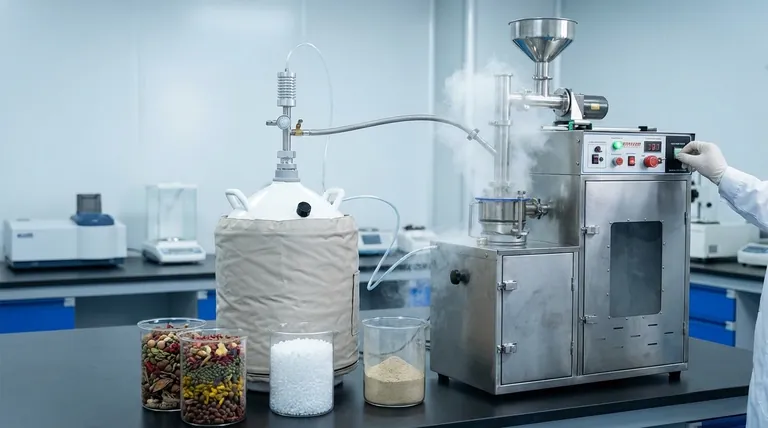
기존 분쇄의 근본적인 문제점
표준 분쇄 방법은 기계적 힘(충격, 전단 또는 압축)에 의존하여 재료를 분해합니다. 이는 많은 물질에 효과적이지만, 이 과정에서 상당한 마찰과 열이 발생합니다.
열 발생과 그 결과
분쇄의 강렬한 에너지는 대부분 열로 변환됩니다. 향신료, 의약품 또는 특정 폴리머와 같은 열에 민감한 재료의 경우, 이는 보존하고자 하는 품질(예: 맛, 향 또는 화학적 효능)을 저하시키거나 파괴할 수 있습니다.
부드럽거나 끈적거리는 재료의 어려움
많은 재료, 특히 플라스틱, 엘라스토머 및 왁스는 상온에서 잘 분쇄되지 않습니다. 부서지는 대신, 밀(mill)의 응력 하에서 부드러워지거나 끈적거리거나 탄성을 띠게 됩니다. 이는 장비의 뭉침 및 오염, 처리량 감소 및 불량한 입자 품질로 이어집니다.
극저온 분쇄가 문제를 해결하는 방법
극저온 분쇄는 공정에 극저온을 도입하여 열과 연성의 한계를 직접적으로 해결하며, 재료의 거동 방식을 근본적으로 변화시킵니다.
취성(Embrittlement)의 원리
재료를 유리 전이 온도 이하로 냉각하면 연성 특성을 잃고 취약하고 유리와 같은 상태가 됩니다. 분쇄력이 가해지면, 취약해진 재료는 깨끗하고 즉시 부서집니다. 이것이 초미세 및 매우 균일한 입자를 얻는 열쇠입니다.
제품 무결성 보존
전체 시스템이 액체 질소와 같은 불활성 냉매로 채워지기 때문에 열이 즉시 흡수됩니다. 이는 열 분해를 제거하여 열에 불안정한 성분의 품질을 보호합니다. 또한 산소를 배제하여 산화를 방지함으로써 최종 제품의 무결성을 더욱 보존합니다.
밀 효율성 향상
재료가 끈적거려지는 것을 방지함으로써, 극저온 분쇄는 밀 내부의 제품 뭉침 현상을 제거합니다. 이는 상당히 높은 생산 속도, 단위 제품당 에너지 소비 감소, 분쇄 부품의 마모 감소로 이어집니다. 이 공정은 더 빠르며 청소를 위한 가동 중단 시간을 줄여줍니다.
상충 관계 및 고려 사항 이해
극저온 분쇄는 강력하지만, 특정 요구 사항이 있는 전문화된 공정입니다. 모든 분쇄 작업에 대한 보편적인 해결책은 아닙니다.
냉매 비용
주요 운영 비용은 액체 질소 또는 기타 냉매의 지속적인 소비입니다. 이 비용은 향상된 제품 품질이나 달리 가공할 수 없는 재료를 처리할 수 있는 능력과 같은 추가 가치로 정당화되어야 합니다.
장비 및 안전 복잡성
극저온 시스템은 단열된 기계, 특수 취급 장비, 그리고 극저온 물질을 관리하기 위한 엄격한 안전 프로토콜을 요구합니다. 초기 자본 투자 및 운영 복잡성은 기존 분쇄 설정보다 높습니다.
과도한 경우
상온에서 쉽게 분쇄되는 단단하고 취약한 재료(예: 광물, 염분 또는 세라믹)의 경우, 극저온 분쇄는 상당한 이점이 없으며 불필요한 비용과 복잡성만 가중시킬 것입니다.
귀하의 응용 분야에 맞는 올바른 선택
올바른 분쇄 방법을 선택하는 것은 전적으로 귀하의 재료 특성과 최종 제품 목표에 따라 달라집니다.
- 열에 민감한 특성 보존이 주요 관심사인 경우: 극저온 분쇄는 향신료, 식품 및 활성 제약 성분(API)의 휘발성 화합물을 보호하는 데 필수적입니다.
- 부드럽거나 탄성 있는 재료 가공이 주요 관심사인 경우: 극저온 분쇄는 달리 녹거나 장비를 오염시킬 수 있는 폴리머, 고무, 왁스 및 접착제에 대해 우수한 방법입니다.
- 초미세의 균일한 분말을 얻는 것이 주요 관심사인 경우: 취성 공정은 기존 방법으로는 달성하기 어려운 수준의 입자 크기 제어 및 일관성을 허용합니다.
- 단순한 재료의 비용 효율적인 대량 감소가 주요 관심사인 경우: 열에 민감하지 않거나 연성이 없는 재료의 경우 기존 분쇄가 가장 경제적이고 간단한 선택으로 남습니다.
크기 감소를 목적으로 재료의 물리적 상태를 근본적으로 변경함으로써, 극저온 분쇄는 달리 달성할 수 없는 가공 능력을 열어줍니다.
요약표:
| 주요 이점 | 설명 |
|---|---|
| 열 손상 방지 | 향신료, 의약품 및 폴리머의 휘발성 화합물 보호. |
| 탄성 재료 처리 | 플라스틱 및 고무와 같은 부드럽고 끈적거리는 물질을 효율적으로 분쇄. |
| 미세 입자 달성 | 재료 취성을 통해 초미세의 균일한 분말 생성. |
| 밀 효율성 향상 | 장비 오염 감소, 처리량 증가 및 에너지 사용량 절감. |
가장 까다로운 분쇄 문제를 해결할 준비가 되셨습니까? 열에 민감한 향신료, 의약품, 폴리머 또는 기타 분쇄하기 어려운 재료를 다루는 경우, KINTEK의 극저온 분쇄 솔루션은 제품 품질을 보존하고 공정 효율성을 향상시킬 수 있습니다. 실험실 장비에 대한 당사의 전문 지식은 귀하의 요구에 맞는 올바른 시스템을 얻을 수 있도록 보장합니다. 귀하의 실험실 분쇄 응용 분야를 지원하는 방법에 대해 논의하려면 지금 전문가에게 문의하십시오!
시각적 가이드
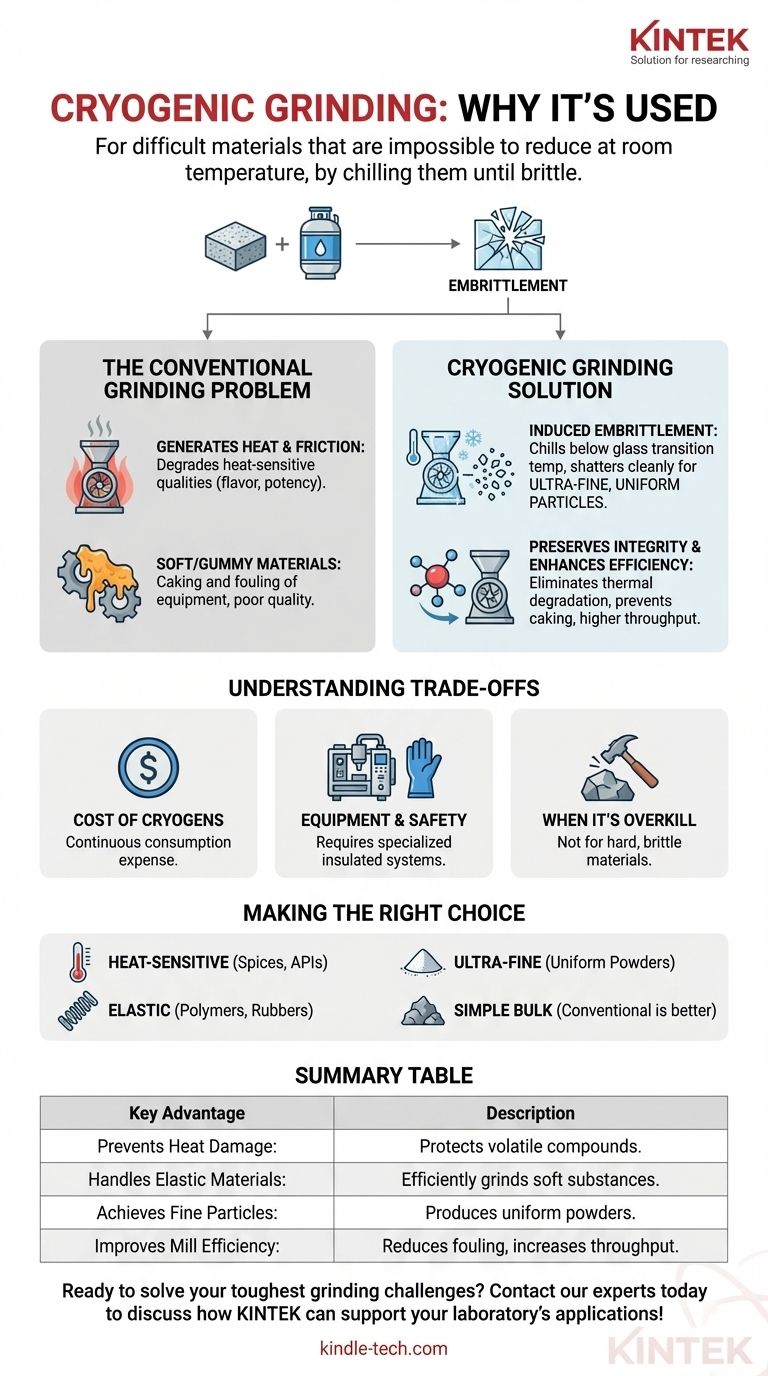
관련 제품
- 스크류 피더가 있는 액체 질소 극저온 분쇄기
- 플라스틱 원료 및 열에 민감한 재료 분쇄를 위한 액체 질소 사용 실험실 저온 분쇄기
- 저온 수냉식 터치스크린 진동 초미세 분쇄기
- 알루미나 지르코니아 연삭 용기와 볼이 있는 실험실 볼 밀
- 실험실 하이브리드 조직 분쇄기
